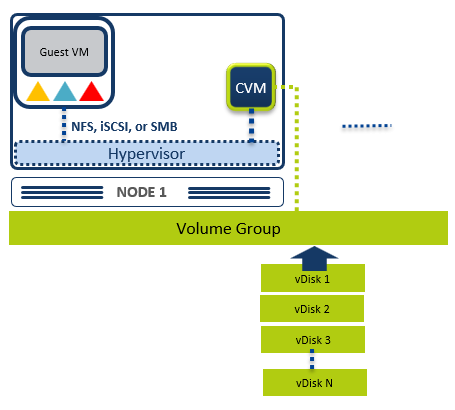This post is also available in: Italian
Reading Time: 4 minutesOn December 2017 Nutanix has released AOS 5.5 unleashed many new features that pushed the envelope on resilience, performance, security, and operational agility.
Now it’s the turn of AOS 5.6 (code name Obelix) picks up where 5.5 left off and makes Nutanix an increasingly persuasive choice for IT organizations to build their enterprise clouds with.
AOS Version 5.5 was a huge new release with impressive new features, but what about version 5.6?
New AOS version features can be summirized in those points:
- Microsegmentation for AHV: The first set of SDN security features are coming out of tech preview with the GA of microsegmentation (but only on AHV). With microsegmentation it’s possible implement application-centric network security, with the full advantage of a stateful distributed firewall in the form of microsegmentation, network automation, and service insertion/chaining as they are natively integrated to AHV and Prism Central.
Additionally, network functionality can be extended via service chaining capabilities that allow for Nutanix ecosystem partners to insert their own advanced capabilities to cover most customer needs.

- Volume group load balancer for AHV: The volume group load balancer allows Nutanix clusters to scale-up per application needs by leveraging the scale-out architecture of our distributed file system. Disk IO can get automatically spread out across multiple nodes using Round-Robin Methodology and leveraging multiple CVMs.

- Greater deployment flexibility with two-node clusters: Finally a 2-nodes cluster configuration, and not only a 1 node option (already available for data nodes). Remote office/branch office customers can now deploy clusters in 1-node and 2-node configurations. This allows remote sites to still take advantage of Nutanix and choose a configuration that best fits their requirements.
There are two different options:- 1-node targeted at micro sites with ~5 VMs; Offers disk level resiliency
- 2-node targeted at small sites with ~5-10 VMs; Offers node level resiliency
- Support up to 80TB per node: This feature delivers more capacity and space consolidation for capacity heavy workloads. Now customers can expand the existing cluster’s capacity with 80TB nodes. This will be a great solution for backup use cases.
- Delivering scale-out to Prism Central: it’s now possible have multiple instances of Prism Centeral that form a distributed control plane. Thus, customers having mid to large Nutanix clusters are now able to benefit from higher PC resiliency and leverage the distributed cluster resource.
- Delivering next-generation v3 APIs: Nutanix AOS 5.6 brings forth Virtual Infrastructure Management capabilities via the RESTful V3 APIs. These APIs are built on an intentful model and are limited to Prism Central. They will allow customers to deliver self-service portal functionality to their IT organizations along with many other features such as microsegmentation.
- Guest OS shutdown operations for AHV: Provides capability to execute user defined shutdown scripts to reboot or shutdown the guest OS from Prism or via API.
Requires NGT >1.2.1 - Greater performance improvements for erasure coding: EC-X is now more efficiently process changed data, resulting in faster writes and far better overall performance when using Erasure Coding.
But the news are not limited only to AOS, also to the new with AFS 3.0.0.1:
- NFS protocol support: AFS is supporting the NFS v4 protocol. With support for both NFS and SMB protocols, AFS can address a wide range of use cases including Linux support, and Windows home directories, user profiles and departmental shares. AFS supports separate SMB and NFS shares/exports on the same file server.
- AFS adds incremental file level backup support: 5.6 incorporates Change File Tracking (CFT) to allow efficient backups. Nutanix has exposed REST APIs to enable these backups. CFT based backups are more efficient, eliminating the need to traverse the full data sets over and over again.
- Active-Active deployments: With the Active-Active deployments, geographically dispersed teams will benefit from fast, local access to project file replicas maintained in real-time across multi-site AFS clusters. Also, this would be able to handle sync profiles and home directories across locations in real-time to ensure that VDI instances have fast local access to user data.
- File auditing: File Auditing can be done through an external syslog server, and we are vigorously working with partners to deliver powerful auditing solutions.


